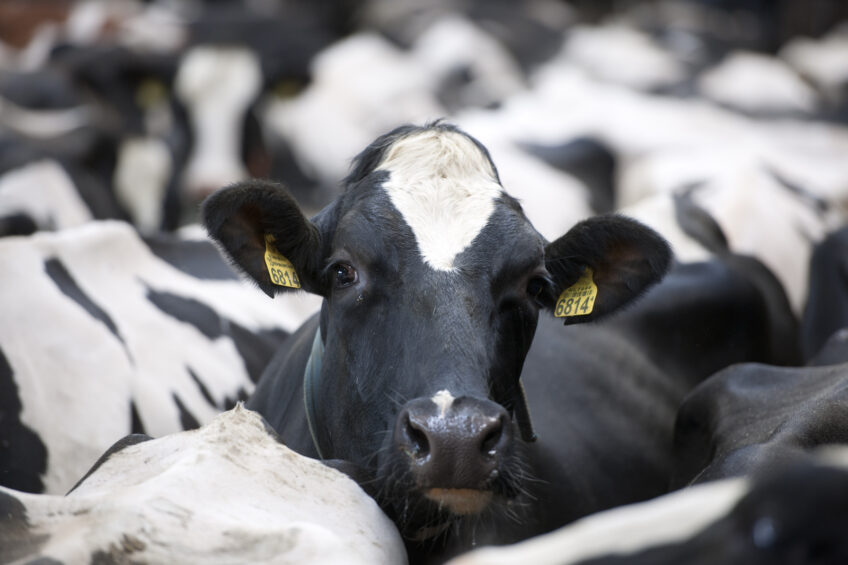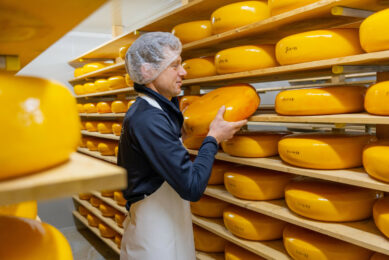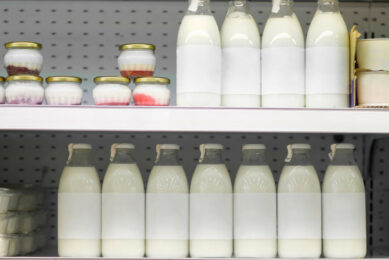EU dairy deliveries are expected to be 1% higher than 2014

EU milk deliveries are projected to be slightly up this year, compared to 2014. This is stated by the European Commission in the report: ‘Short-Term Outlook for EU arable crops, dairy and meat markets in 2015 and 2016’.
Despite lower milk prices, EU milk deliveries in 2015 are expected to be nearly 1% above 2014. It means that after the 1.2% decrease observed in the first 3 months of the year, until quota expiry, EU milk collection could increase by 1.6% compared to last year, in the remaining months of the year. However, very different developments can be observed in the different Member States, with a few countries showing a strong increase in milk collection from the first day after quota expiry, while in other countries no such development is observed.
Differences per member state
In the first quarter of 2015, the decrease in deliveries compared to 2014 was particularly noticeable in Cyprus, Ireland, Estonia, Belgium, Austria, the Netherlands, Latvia, Italy, Germany and Denmark. Most (but not all) of these Member States were at risk of exceeding quota (Member States were granted the possibility under Regulation EC (No) 2015/517 of 26 March 2015 to allow affected farmers to pay the surplus levy over a 3 year period). In other Member States like France, with deliveries well below quota, the decrease resulted more from adjustment to market and price developments. In the United Kingdom, a slowdown in milk deliveries was also noticeable. By contrast, farmers in other Member States continued to substantially increase their deliveries despite low milk prices: Hungary, the Czech Republic, Slovakia, Slovenia and Portugal. Milk collection rose in Lithuania and Finland too, despite the Russian import ban. Some production adjustment due to price signals might occur eventually later in the year in these countries but 2015 is nevertheless expected to show significant production increases in these countries.
Postponing calving season
Since 1st April 2015, despite prevailing price levels, milk collection surged in some of the Member States previously limited in their expansion by the quota: Ireland, Austria, Luxembourg, Poland and Spain (by order of magnitude) and since May in the Netherlands. Farmers had adopted different strategies to reduce deliveries prior to quota expiry. For many a priority was not to damage the herd potential in order to expand rapidly production as of the 1st April 2015. Among other possibilities, farmers ended cows’ lactation period earlier and postponed the calving season. Poland is an interesting case, because despite a huge increase in cow slaughterings (35% higher since April 2014, year-on-year), rather low milk prices and the quota overshoot, the milk production slowdown in the first quarter of 2015 was limited and in April production surged rapidly (+4.2% compared to 2014).
Milk spike among grassfed cow countries
A herd increase was scheduled by farmers ahead of milk quota expiry, having in mind long-term opportunities on the world market: in December 2014, the number of dairy cows in the EU-15 was close to 1% higher compared to 2013, with significant increases recorded particularly in Ireland (+4.2%) and the United Kingdom (+3.6%). Very good forage conditions contributed also to milk production expansion in the last months, particularly in countries where cows are mainly grassfed. By contrast, in Germany and France (close to 40% of EU milk collection) monthly deliveries reached last year levels only at the end of May and no strong increase is expected given price developments so that in 2015 milk collection should not exceed 2014. In Belgium and Sweden, 2015 milk deliveries could be lower than in 2014. Similarly, limited increases are expected in the United Kingdom and Italy. In Spain, difficulties to find processors willing to process milk, especially in Galicia, might lead to downwards adjustments of milk deliveries by the end of the year. In 2016, milk collection might increase by not more than 1%, again assuming a continuation of the Russian import ban: a faster growth of world supply compared to demand might delay the expected rebound in farm milk prices.
Join 13,000+ subscribers
Subscribe to our newsletter to stay updated about all the need-to-know content in the dairy sector, two times a week.










